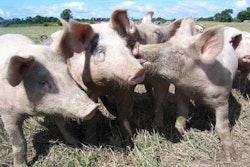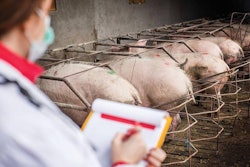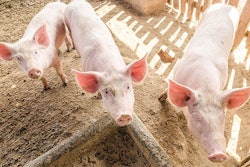
Virus survived simulated trans-oceanic voyage and could spread in animal feed, study concludes
African swine fever in animal feed could enable the virus to spread to other countries, and even, potentially, to cross oceans, according to the results of a new study.
Megan Niederwerder, a pathobiologist at Kansas State University, and her colleagues subjected the virus to a simulated transoceanic voyage, confirming what they had already known — that African swine fever could hitch a ride across the ocean in animal feed, and remain contagious.
But more surprising — and concerning, Niederwerder said — was the realization that the virus persisted longer in feed ingredients than in laboratory media intended to help culture the virus for research purposes.
“It was an interesting finding that the feed ingredients supported the stability of the virus more than the media,” she said. “It was surprising — and scary.”
Learning more about the virus
In a previous study, Niederwerder determined that ASF was capable of surviving in various feed ingredients for extended periods of time. The goal for this research, she said, was to learn more about how and what degrades the virus.
But even when subjected to changes in temperature and humidity, as the virus would be if ASF-contaminated animal feed were to cross the ocean, the virus survived longer than previous estimates anticipated.
Researchers originally put the half-life of African swine fever in animal feed at 4-5 days, Niederwerder said. Their study, in which they tested for the virus every few hours, found the half-life to range from 9.6 to 14.2 days, depending on the feed ingredient. Scientists generally assume it takes 5-7 half-life periods to degrade 79-99% of a virus and reduce the risk of transmission, suggesting feed contaminated with ASF could remain contagious for months.
Niederwerder said the next phase of her research would focus on identifying potential means of mitigating the risk of transmission of ASF in animal feed — holding times, heat treatments, antivirals and the like. But she said there was a need for research to determine whether the virus is already spreading via animal feed — a possibility she believes is likely.
“I definitely think it’s a possibility, and that it could be contributing to spread within and between countries,” Niederwerder said.


















